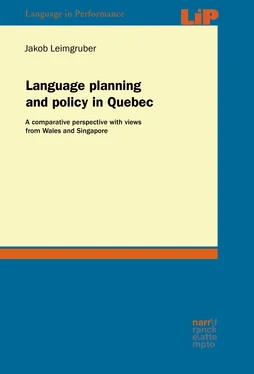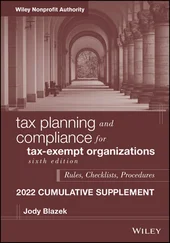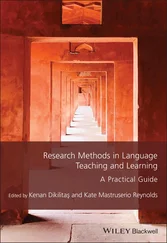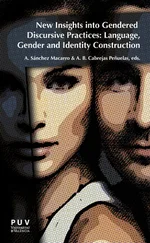The features described in Boberg (2008; 2012) make a strong case for Quebec English as a distinct variety of Canadian English, even though many of the features are purely lexical. The fact that other scholars (Poplack, 2008; Poplack et al., 2006) reject this idea based on corpus linguistic evidence may be explained by the limited sizes imposed by corpora compilation and by the fact that low-frequency forms need not necessarily be found easily by this method. There is also research that shows a reasonably large degree of ethnic variation in Quebec English, specifically in Montreal, and specifically between the Irish, Italian, and Jewish ethnic groups, a finding that Boberg (2004a) again attributes to the minority status of English in the province. Furthermore, recent research has even found regional variation within Quebec English beyond the Montreal metropolitan area, with ways of speaking particular to places such as the Gaspé region in eastern Quebec (Boberg and Hotton, 2015).
Despite its status as the language of a minority within the province, English nonetheless enjoys a level of institutional support that other languages simply lack. This is due in part to federal language policy, which ensures official English–French bilingualism in federal institutions throughout Canada; constitutional provisions also mandate that both French and English may be used in the provincial legislature, and that laws must be enacted in both languages. It is also due to the historic presence of Anglophone Quebecers. Their community, arguably as deeply rooted in the province as the Francophone community, has been given special linguistic status by policies that ensure that educational, social, and health services are available in the English language to Anglophones. This has resulted in parallel infrastructures with hospitals, school boards, universities, retirement homes, etc., that serve exclusively the English-speaking minority, and are (entirely or partly) financed by the province.2 These networks are of immense significance to the ageing monolingual population, as well as to create a sense of community among Anglophone Quebecers: school boards, in particular, are important, as they ensure the continuation of the Anglophone experience in the province – not an easy task given the many Anglophones who opt to send their children to French school (see above). This also explains why proposed changes to the way school boards are run (as semi-autonomous entities with their own elections) have been met with fierce opposition within the community (Meagher, 2016). Finally, English is also implicitly viewed, by authorities, as part and parcel of the Montreal identity, as evidenced by a Quebec Superior Court decision in 2012 ordering a sushi bar to remove the word ‘Fukyu’ from its name. Presented as of Japanese origin (from 普及型 fukyū(-gata) [ɸɯ̥ᵝ.kjɯᵝ(ɡata)], lit. ‘universal reach (form)', a type of movement sequences in karate), it was deemed inappropriate by some anglophone neighbours in the Côte-des-Neiges borough3 for its possible English reading as [fʌk.ju]. The judge ruled the word ‘clearly inappropriate given its meaning when pronounced in a Montreal context ’ (Lampert 2012, my emphasis), thereby taking the English pronunciation – rather than the French (official) or the Japanese (original) one – as the benchmark against which the word in question was evaluated.4
English also benefits from its status as the dominant language on the North American continent and as the primary global lingua franca (see chapter 3). Multinational companies operating out of Montreal are known to operate in English; in fact, the law allows companies to negotiate an agreement with the OQLF in order to be exempted from some of the francisation requirements (Marsan, 2015). This should not come as a surprise, particularly for companies that conduct business primarily or solely in non-francophone countries. While the Charter of the French language was specifically passed to address this predominance of English in the commercial realm, it would appear that when very large corporations (and their tax revenues) are at stake (the ‘1% of companies’ (Marsan, 2015)), concessions may be obtained.
2.4 New Brunswick: a bilingual province
The language policies at work in the province of New Brunswick shall be described in a little more detail here, for it is, like Quebec, a province that is characterised by a rather unique demolinguistic profile and language policy. New Brunswick was visited by Jacques Cartier on his first voyage in 1534, and Champlain established the first permanent European settlements in 1604. What is now Maritime Canada (Nova Scotia, New Brunswick, and Prince Edward Island) was claimed as part of the colony of New France and named ‘Acadia’, with settlers from France mingling with the aboriginal Mi’kmaq and Maliseet (Wolastoqiyik), with most settling in Peninsular Acadia (Nova Scotia). The colony saw its first decline after the War of the Spanish Succession, when the Treaty of Utrecht (1713) handed Nova Scotia to Britain. Mainland Acadia was conquered in the course of the French and Indian War with the fall of Fort Anne (present-day Fredericton, the capital of New Brunswick) in 1759.
The British conquest of Acadia was disastrous for the French colonists. A large number of Acadian settlers were deported in the course of le grand dérangement , a programme which saw 11500 of the region’s 14000 Acadians forcibly removed to locations ranging from Quebec to Louisiana. This greatly reduced the Francophone population, which was replaced, shortly thereafter, by Loyalists fleeing the seceding American colonies. When Acadians were allowed to return to Nova Scotia in the late 1770s, most fertile land had been re-appropriated by arrivals from New England. The general wave of immigration to North America in the late 18 thand early nineteenth century from the British Isles also affected Maritime Canada and with it New Brunswick, by bringing increasing numbers of English-speaking settlers. By 1871, the former French majority had been reduced to 16 %. This number rose again after Confederation (in 1867; New Brunswick was one of the original four provinces, with Nova Scotia and Upper and Lower Canada, to merge into a larger federal unit that would eventually become the country Canada), reaching 24 % in 1901 and 34 % in 1931 (Forbes, 2008).
Data from the 2006 census show that this proportion has somewhat decreased: 27 % report ‘French’ as one of their ethnicities. There is the possibility that extra options in the census have influenced this number: for one, multiple responses are possible for ethnic origin, so that one can identify as both French and Scottish, for instance; also, the category ‘Canadian’, first introduced as an ethnic origin in the 1996 census, was chosen by 53 % of the New Brunswick population as one of their ethnicities. The term glosses over the traditional language divide and can apply to persons of English, French, Aboriginal, or mixed heritage. The language data from the 2011 census offer more reliable measures. Those with French as their only mother tongue account for 32 % of the population, those with English only 66 % (only 1 % claim both languages as their mother tongues). These numbers (one third French, two thirds English) are in line with the situation as it was in 1931, so that a certain degree of overall stability in the ethnolinguistic distribution can be observed. Knowledge of official languages, however, is unevenly distributed across language groups: 33 % of the total population of New Brunswick claims knowledge of both French and English, but while 58 % only know English, just 9 % only know French. Monolingualism in French is, therefore, a minority phenomenon in the province, whereas bilingualism, while it exists among Anglophones at the rate of 15 %, is much more common among Francophones (71 % of them being bilingual and 28 % monolingual in French).
Читать дальше












